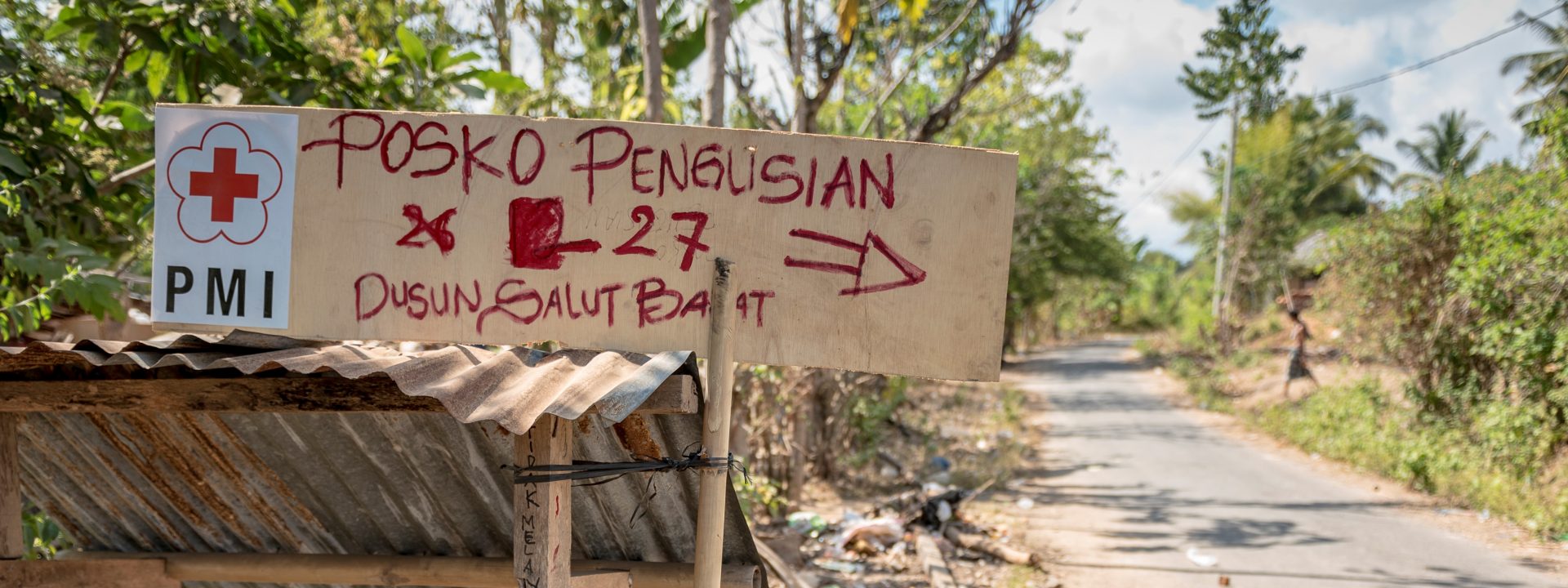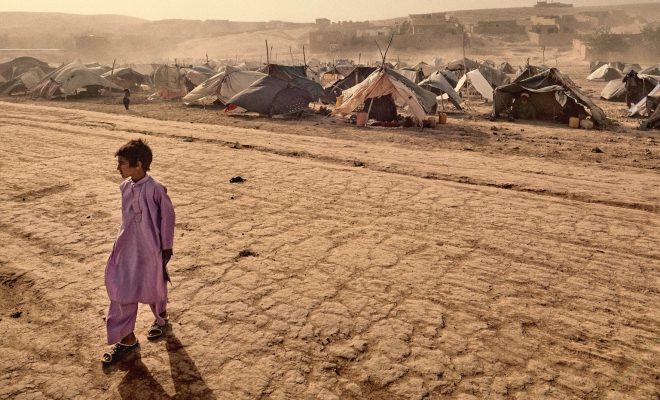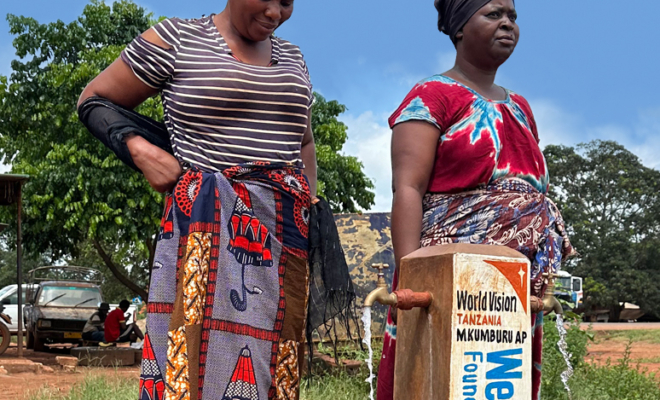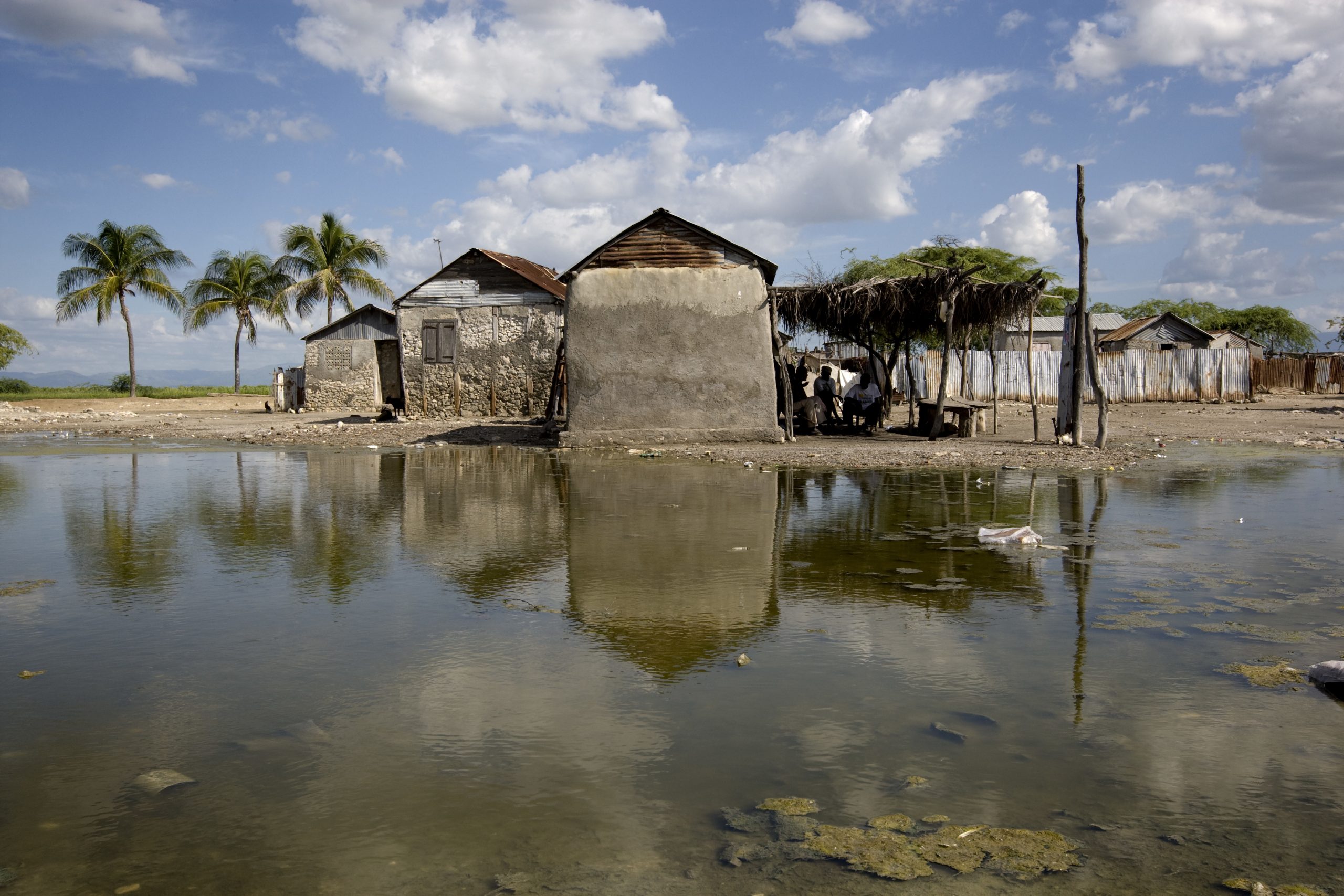
A flood is a natural phenomenon; it is the presence of human settlements in the flooded area that creates the possibility of disaster. © UN Photo/UNICEF/Marco/ Haiti
Before the SARS-CoV-2 outbreak, pandemics seemed like anachronistic threats to the developed world. Certain of their medical advances, with access to clean water and sanitation, and with hygienic habits established in their culture, the inhabitants of rich countries believed that episodes like the Spanish flu in the early 20th century would not happen again. They were not seen as a disaster capable of becoming universal, but were rather perceived as diseases typical of poor tropical countries, without an effective health system and with notable deficiencies in access to water and sanitation. Covid-19 has put an end to this assumption.
The current pandemic is a “natural disaster”, a term that was commonly reserved for floods, droughts, earthquakes, hurricanes and other natural upheavals, but has always been included by the United Nations Office for Disaster Risk Reduction (UNDRR) in the list of threats to humanity. Its biological nature changes the usual scenario: it is a virus that acts through contagion; it is no longer a geographically isolated disaster affecting a particular social or economic sector, but one that spreads universally.
When talking about “natural” disasters, the UNDRR makes a necessary differentiation between “disasters” and the “phenomena” that cause them: the phenomena are indeed natural, but disasters are caused by the action of humans in their environment. For instance, a flood due to the overflowing of a river is a natural phenomenon; it is the presence of human settlements in the flooded area that creates the possibility of disaster. When assessing disaster risks and preventing them, the equation traditionally used in geography as a base for all studies needs to be taken into consideration:
Risk = Hazardous phenomenon x Exposure x Vulnerability
Understanding the concepts of exposure and vulnerability is the base of any prevention and action policy. In the case of Covid-19, the triggering phenomenon is disease, a biological phenomenon that provides very specific variables: it affects all human activities, in all spaces and individual human behavior plays a decisive role in its expansion.
In a pandemic such as Covid-19, the assessment of risks falls squarely within the scope of anthropogenic factors. Exposure to disease is inevitable, but the irresponsibility of people themselves and of their rulers decisively increases this variable. The same is true of vulnerability, a factor in which poverty or lack of resources add to the age of people or their immune deficiency to make it lethal. The generation of the phenomenon, disease, also has anthropogenic causes: the invasion and degradation of natural habitats has led to an increase in zoonosis, the transmission of diseases from animals to humans, a factor that will have to be taken into account in the future.
Prevention, an unresolved matter for mankind
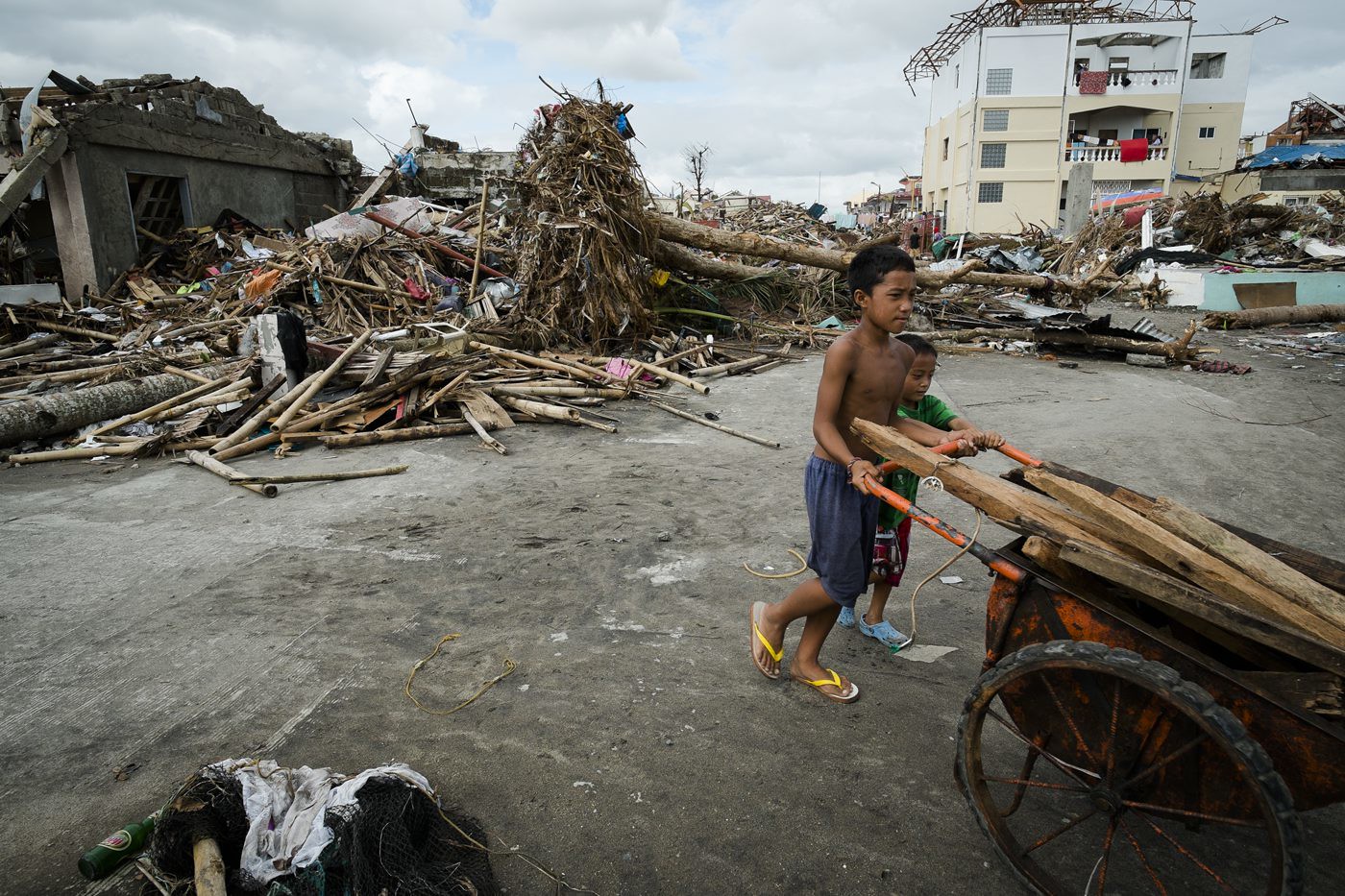
Current science can foresee weather phenomena such as hurricanes with remarkable accuracy, but much less so climate phenomena such as droughts.© UNHCR / R. Rocamora
Dangerous phenomena are uncertain. Current science can foresee weather phenomena such as hurricanes with remarkable accuracy, but much less so climate phenomena such as droughts, and its forecasting ability is even less reliable in phenomena such as earthquakes. Pandemics belong to this more uncertain group of disasters: it is not possible to foresee when they will arise, but we know for sure that sooner or later, they will.
To mitigate the impact of these disasters, the UNDRR established the Sendai Framework for Disaster Risk Reduction 2015-2030 in 2015, which was adopted at the Third UN World Conference on Disaster Risk Reduction. This agreement, established in Sendai (Japan), provided an opportunity for countries to implement specific measures to gain knowledge of risk factors and establish strategies and protocols for action to reduce the exposure and vulnerability factors.
The UNDRR highlighted the high cost of disasters. More than 700,000 people died, more than 1.4 million were injured and about 23 million were left homeless between 2005 and 2015. Globally, more than 1.5 billion people were affected in various ways and 144 million were displaced. Women, children and people in vulnerable situations were the most affected. Total economic losses amounted to more than $1.3 trillion.
In all countries, although more significantly in the poorest, the degree of exposure of people and assets has increased more rapidly than vulnerability has decreased. Science warns that disasters, such as floods, fires, droughts and even pandemics will increase in frequency and intensity because of climate change and environmental degradation. We are facing a serious obstacle in the progress towards the attainment of the SDGs in 2030.
The current pandemic has highlighted that there needs to be a broader and more people-centered approach to disaster risk prevention for it to be effective. More targeted action must be taken to address other underlying causes that are often overlooked by the public, such as poverty and inequality, the lack of health resources and the rapid and unplanned urbanization that deteriorates water resources and does not guarantee the access to water and sanitation. Migrations and subsequent demographic changes due to violent conflicts, governance failures and political corruption must also be taken into consideration. But it is the lack of incentives for both private and public investment in risk reduction that is the most worrying factor.
This last economic factor is essential. By 2015, investment in disaster risk reduction was 20 times less than that devoted to addressing disaster-related humanitarian emergencies. In other words, the world is now ignoring the old saying “better safe than sorry”. Since then, in these past five years this trend has not been reversed and humanitarian needs have been increasing and now exceed the financial capacity to address them. There are no final figures yet, but Covid-19 will make the situation much worse.
However, World Bank studies are clear: every dollar invested in disaster risk reduction saved between four and fifteen dollars in disaster recovery. International cooperation initiatives are always based on this premise, which now, in the wake of coronavirus, will surely increase.
A marketing problem?
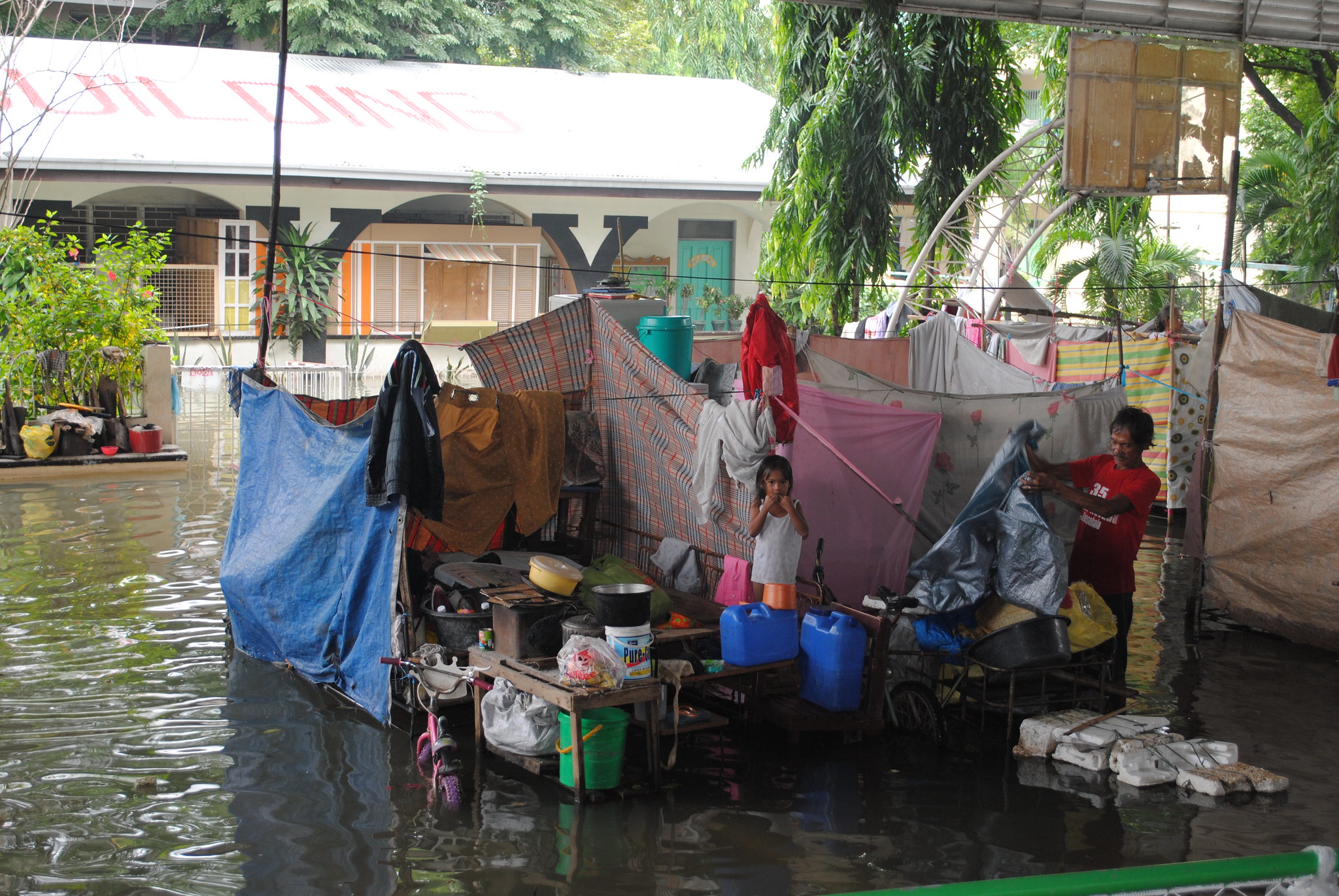
More than 700,000 people died, more than 1.4 million were injured and about 23 million were left homeless between 2005 and 2015 due to disasters. © Photo Credit/ Arlynn Aquino EU/ECHO.
What makes this lack of investment difficult? According to Mami Mizutori, Special Representative of the UN Secretary General at the UNDRR, risk prevention funding is facing a marketing challenge. According to the expert, the problem is to convince, in a world of limited resources, of the need for action and investment so that something that could happen, does not happen. The benefits of such an investment will always be evident in the long term and will be complex to calculate: but the investment costs are always immediate and exactly quantifiable, and this is always a burden when promoting initiatives.
Good public communication of the factors that make up risk is essential. Once again, the need to include in education systems an awareness of the importance of human behavior in the exposure and vulnerability factors becomes evident. In this sense, the Covid-19 pandemic, with its serious global economic consequences, has generated a change in the perception of these factors; a change that is already visible in the media and social networks. Prevention saves lives, and we need it now more than ever.


